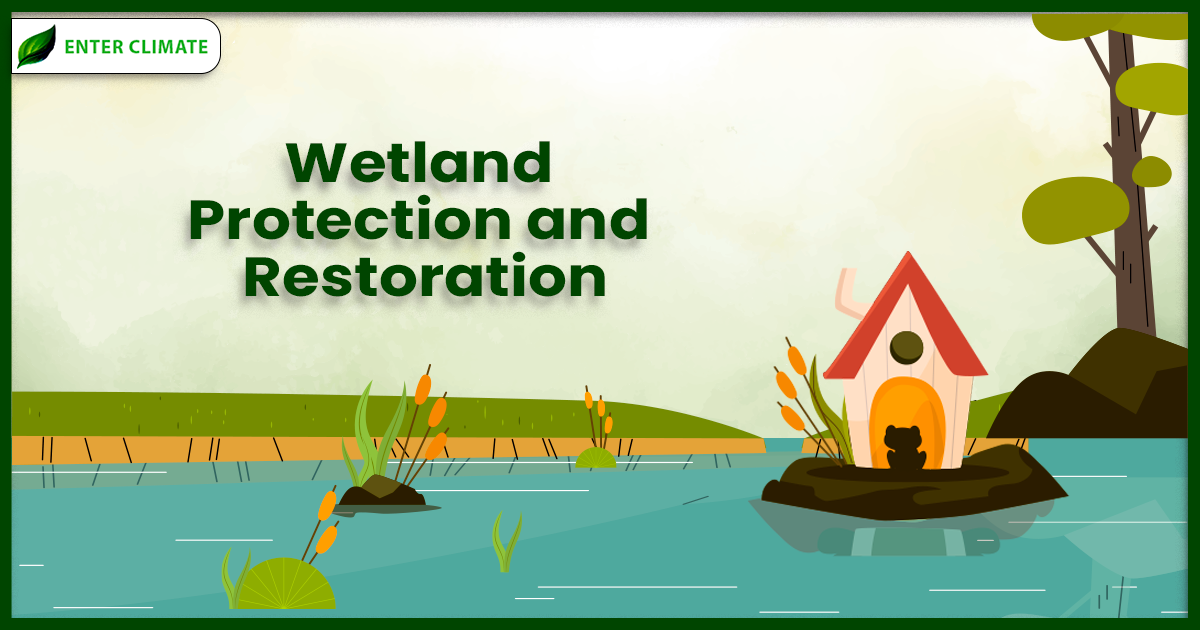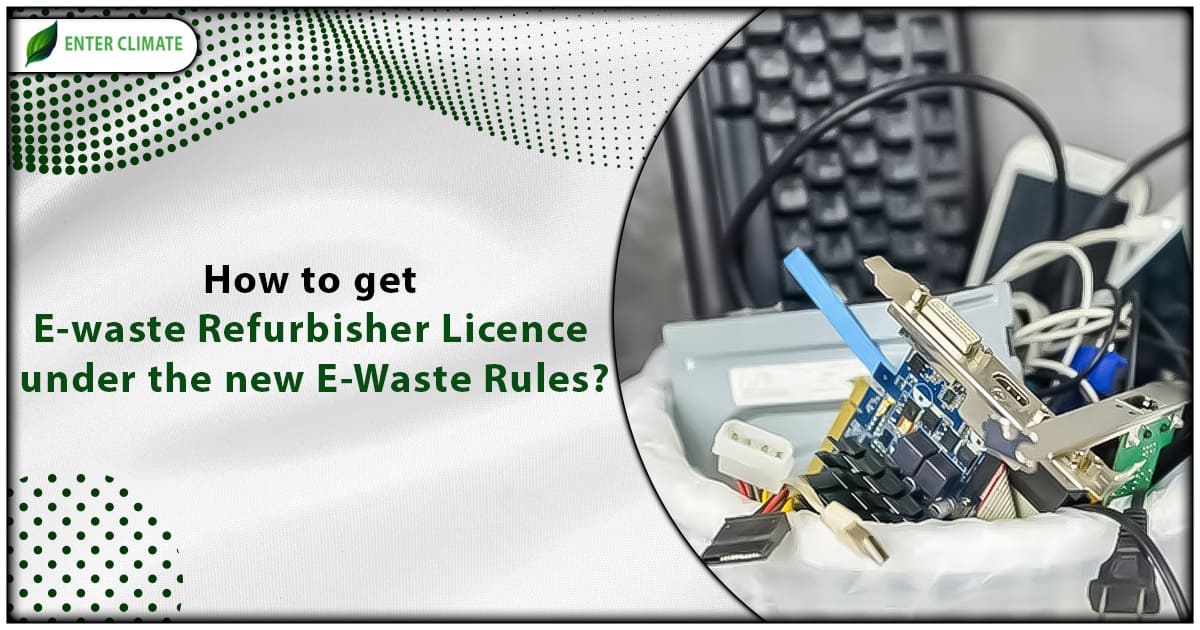Significance of Wetland Protection and Restoration
 13 Oct, 2023
13 Oct, 2023 
Wetland protection and restoration are essential for preserving ecosystems and biodiversity. Protection involves legal measures, like designating wetlands as protected areas, while restoration aims to rehabilitate degraded wetlands. Both are crucial for maintaining water quality, flood control, and habitat for wildlife.
Wetlands encompass diverse ecosystems, including marshes, swamps, bogs, and coastal estuaries, each playing a unique and critical role in our natural environment. In this article, we’ll explore the significance of wetlands and the importance of safeguarding and rehabilitating these essential landscapes.
Importance of Wetland
First, wetlands are important at the national, state, and local levels to prevent and control pollution, provide flood storage and conveyance, provide stormwater management, reduce erosion and sedimentation, protect source water protection, protect ducks, fish, and other wildlife, to provide tourism, to produce natural crops and to store atmospheric carbon.
Second, many wetlands continue to be threatened by fills and drainage. Activities in wetlands not only destroy natural functions and values but pose costs and hazards to communities and society as a whole. Wetlands are often characterized by deep, waterlogged, organic soils which are unstable as building locations. These soils may also be subject to liquefaction and severe damage during earthquakes. Onsite waste disposal is also a problem because septic tanks and soil absorption systems quickly fail in wetland high-ground water conditions. Development in wetlands adjacent to lakes, streams, and coastal waters is typically subject to serious flooding and may increase flooding on other lands. Flooding to a depth of 10 feet or more by a 100-year flood in riverine wetlands along major rivers and estuarine and coastal wetlands along the coasts is common.
Third, the protection of wetlands is a political and legislative issue, with some individuals and groups wishing to protect and restore wetlands and others wishing to develop/destroy wetlands.
Protection of Wetland
At all levels, wetland protection and restoration are required to be done by providing financial support for existing wetland non-regulatory (e.g., landowner incentives) and regulatory programs (central, state, local). Most programs are limited by a lack of staff and funds. Funding support is needed for mapping, assessment, planning, conservation easements, wetland purchase, public and landowner education, restoration, and research efforts. Adopting and funding additional landowner technical assistance and incentive programs including, Farm Bill, Partners for Wildlife, and many state and local acquisition, conservation easement, and tax incentive programs. Authorizing or adopting regulations are required to fill the gaps in the regulations.
Nirmala Sitharaman, the union finance minister, announced the Amrit Dharohar and MISHTI schemes in the 2023–24 budget to protect important wetlands that support aquatic biodiversity as well as mangrove plantations along the coast and on salt pan lands. The (MoEFCC) Ministry of Environment, Forests, and Climate Change[1] has been given Rs 3,079.40 crore in the 2023–24 budget, a 24 percent increase from the Rs 2,478 crore allotted last year. Local communities have always been at the front of conservation efforts because the wetlands have rare or unique biodiversity and play a significant role in protecting the ecological biodiversity of a region. Through Amrit Dharohar, the government will promote its distinctive conservation value. This plan will be put into action over the following three years in order to promote the best possible use of wetlands, improve biodiversity, carbon stocks, ecotourism opportunities, and generate income for nearby communities.
On Global Scale
Wetland protection and restoration have global significance due to wetlands’ critical role in supporting biodiversity, mitigating climate change, and providing various ecosystem services. Here are some key aspects of wetland protection and restoration on a global scale:
- International Agreements:
- The Ramsar Convention, an international treaty signed by numerous countries, aims to conserve and wisely use wetlands worldwide. It designates Ramsar Sites of international importance for wetland conservation.
- Biodiversity Hotspots:
- Wetlands are biodiversity hotspots, providing habitat for various plant and animal species. Protecting and restoring wetlands helps safeguard global biodiversity.
- Climate Change Mitigation:
- Wetlands are essential for carbon storage and sequestration, helping mitigate climate change. Restored and healthy wetlands can act as carbon sinks.
- Water Resources:
- Wetlands regulate water flow, filter pollutants, and recharge aquifers. They are critical for ensuring a sustainable supply of freshwater, which is essential for human well-being.
- Migration Routes:
- Many wetlands serve as stopover points for migratory birds, making them crucial for bird conservation on a global scale.
- Human Livelihoods:
- Wetlands support the livelihoods of millions of people globally, including through fishing, agriculture, and tourism.
Environmental Impact Assessment (EIA)
A tool for preventing and managing environmental impacts brought on by development projects is known as environmental impact assessment (EIA). EIA makes it possible to identify effects quickly and accurately so that appropriate mitigation measures can be taken to reduce or control the effects. To specifically enhance the environmental management of projects that have an impact on wetlands, the EIA Guidelines for Wetland protection and restoration have been developed.
Environmental Impact Assessment (EIA) is an environmental management tool that operates within the concept of sustainable socio-economic development. EIA enables the achievement of commitments to international environmental conventions.
The EIA Guidelines will be used by organizations, individuals, and those managing projects that could have an impact on wetlands.
The objectives of EIA Guidelines for Wetland Protection and Restoration are:
- to provide direction and information for decision-making
- to provide advice on EIA processes as regards the management of wetlands;
- to enable proponents/developers and stakeholders to participate effectively in wetland management EIA process and related administrative actions; and
- enable environmentally adequate management of all development project activities that may negatively impact wetlands
Regulatory Authority
MoEF&CC has notified Wetlands (Conservation and Management) Rules 2017, under the provisions of the Environment (Protection) Act 1986, as the regulatory framework for wetland protection and restoration throughout the nation in order to preserve, manage, and maintain the wetlands’ ecological character without limiting their sensible use.
Ramsar Convention on Wetland Protection and Restoration
In 1971, in the Iranian city of Ramsar, the Ramsar Convention, a treaty on wetlands, was formally adopted. The different nations and NGOs began negotiating the convention in the 1960s to protect wetlands and their resources. In 1975, it finally went into effect. According to the Ramsar Convention, India has 75 Ramsar Sites.
The Ramsar Convention was created with three pillars as its foundation:
- The goal of wise use is to make all wetlands useable.
- Designate appropriate wetlands under the Ramsar List in order to manage those on the List of Wetlands of International Importance in an efficient manner.
- Cooperation on a global scale regarding shared species, shared wetland systems, and transboundary wetlands is referred to as international cooperation.
India and Ramsar Convention
The international agreement called the Ramsar Convention encourages wetland protection and restoration. It is also referred to as the Wetlands Convention. According to the Ramsar Convention, there are 75 Sites in India. These Ramsar Sites cover a total area of 1,326,677 hectares across the entire nation. India formally ratified the Ramsar Convention on February 1st, 1982, demonstrating its support for the international initiative to protect wetlands.
Conclusion
In conclusion, wetland protection and restoration are paramount for the health of our planet and its inhabitants. These ecosystems provide numerous essential services, from biodiversity conservation to climate change mitigation and water purification.
In a world facing environmental challenges, wetland protection and restoration are not only ecological imperatives but also crucial for the well-being and sustainability of human societies. Commitment to these efforts at local, national, and global levels is essential to ensure wetland ecosystems’ future health and resilience. Wetlands are critical to the planet’s health, and their protection and restoration efforts require international cooperation, research, funding, and a commitment to sustainable practices. Global recognition of the importance of wetlands is vital to ensuring their long-term survival and the benefits they provide to both nature and humanity.
FAQs
The process of restoring a wetland involves changing its physical, chemical, or biological properties to enable it to perform its original functions.
Many state and tribal fishing economies depend critically on wetlands. Wetlands protection and restoration are important in order to provide migratory birds with feeding and resting areas as well as habitat corridors for wildlife populations. These services also produce economic, leisure, and aesthetic benefits for the state and the tribes.
Wetlands are home to at least one-third of all threatened and endangered species. They are highly productive and biologically diverse systems that improve water quality, control erosion, maintain stream flows, store carbon, and sequester carbon.
Wetlands that are currently protected by an easement or another method of resource protection that accomplishes the same goals as an easement, such as a State or Federal wildlife management area, are considered to be protected wetlands.
Wetlands act as natural barriers, retaining and slowly releasing floodwaters, rainwater, snowmelt, and surface water. Wetland vegetation also reduces soil erosion and slows flood waters, resulting in lower flood heights. Wetlands are critical to human and environmental survival.
The Wildlife (Protection) Act, 1972 (35 of 1972) guidelines apply to wetlands within the boundaries of National Parks and Wildlife Sanctuaries, Wetlands (Conservation and Management) Rules 2017, under the provisions of the Environment (Protection) Act, 1986.
The Ramsar Convention promotes the designation of wetlands that are important for preserving biological diversity or that are representative, rare, or unique. Once designated, these locations are known as Ramsar sites and are included on the Convention’s List of Wetlands of International Importance.
Wetlands provide a diversity of ecosystem services that benefit both human welfare and agriculture. Wetlands have the ability to support productive soils, lower erosion, hold onto sediments and nutrients, and lessen the likelihood of salinity and acid-sulfate soils, support grazing or aquaculture.













